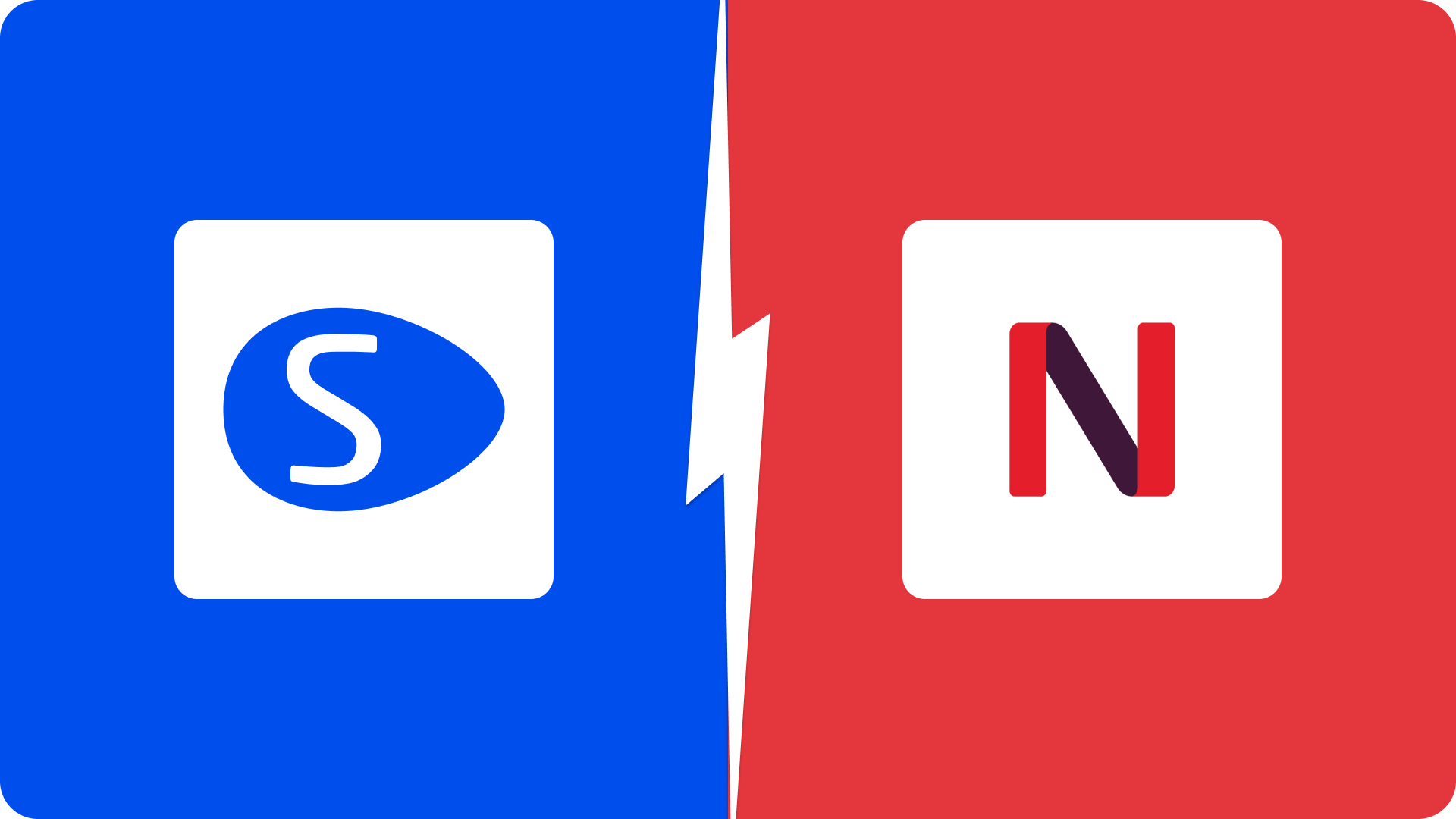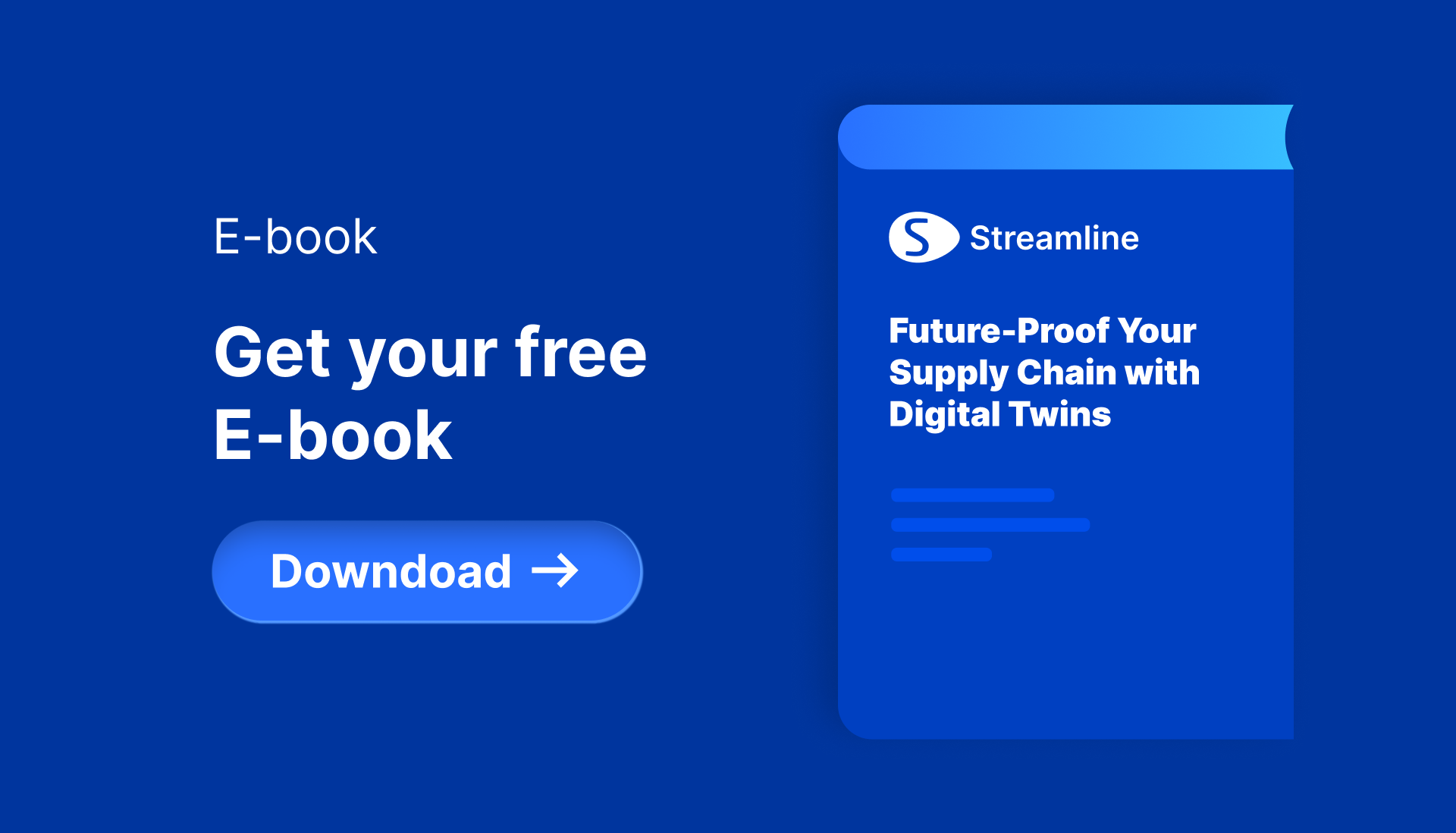GMDH Streamline VS Netstock Inventory Advisor: Demand Forecasting and Inventory Planning Solution Comparison

GMDH Streamline and Netstock are often compared as market-leading digital solutions for demand forecasting, inventory optimization, and revenue planning.
These platforms are leaders in their space, and both of them offer dozens of features where typical demand planners whirl of delight (especially comparing any of the digital solutions to manual Excel routine), but there are few clear differences, almost nobody knows, which is worth emphasizing.
In this detailed research, we’ll compare Netstock vs. Streamline market-leading platforms based on business value, feature analysis, and customer service to help you decide which solution is the best for your business.
Netstock is a cloud-based solution that enables businesses to remain agile and responsive to changes in supply and demand. The solution unlocks ERP data to enhance demand forecasting capability.
To compare, GMDH Streamline is a powerful and sophisticated digital solution for demand forecasting and revenue planning. The solution integrates with any ERP system and helps with demand forecasting, inventory planning, supply planning and material requirements planning based on historical sales. GMDH Streamline is a supply chain planning platform that uses AI and dynamic simulation to optimize inventory levels and increase profitability.
Let’s take a closer look at solutions’ differentiators.
| GMDH Streamline | Netstock Inventory Adviser | |
|---|---|---|
| Best for | Medium-sized and Large Enterprise companies in manufacturing, distribution, wholesale and retail with annual revenue from $10 million – 10 billion with multiple channels, stores, and warehouses. | Small and Medium-sized companies in manufacturing, distribution, wholesale and retail. |
| Industries | Automotive, furniture, pharmaceutical, healthcare, medical equipment, retail, food & beverage, fashion, apparel, electronics, equipment, etc. | Automotive, pharmaceutical, chemicals, mining, food & beverage, and packaging. |
| ERP integrations | 20+ the most popular ERPs + a dedicated technical team that can quickly develop integrations with specific ERP using ODBC | 50+ the most popular ERPs |
| ERP Modules | Demand Forecasting & Planning | Demand Forecasting & Planning |
| Sales Forecasting | Inventory Optimization | |
| Supply Planning | Supply Planning | |
| Inventory Optimization | Material Requirements Planning | |
| Material Requirements Planning | ||
| S&OP | ||
| Inter-site optimization | ||
| Dynamic Simulation | ||
| Multiple data sources | YES | NO |
| User roles and permissions | YES | NO |
| Cloud/On-prem | On-premise (Windows, Mac) and cloud solution | Cloud version only |
| Forecasting frequency | Weekly forecasting, monthly | Monthly forecasting only |
| Demand planning per customer | YES | NO |
| S&OP process support | YES | NO |
| Customers support | Dedicated customer success manager | n/a |
| Local representatives | n/a | |
| Dedicated onboarding engineer | Dedicated onboarding manager | |
| Zoom calls | n/a | |
| Dedicated Slack channel | n/a | |
| Support within one business day maximum | Support within one business day maximum | |
| Knowledge base | NO | |
| Dynamic simulation | Yes, simulates future orders and projected plans | NO |
| Utilizing AI | YES | NO |
| Digital twin | YES | NO |
| Languages supported | English, Spanish, Portuguese, French, Chinese simplified, Japanese, Polish, Ukrainian | English, German |
The Netstock and GMDH Streamline platforms are absolute leaders in demand planning, supply planning, inventory optimization, and S&OP planning categories (due to the independent review source G2). This review description highlights apparent differences in the table above.
Best for: GMDH Streamline strives to resolve challenges for mostly medium enterprises with annual revenue of $10 million – $10 billion while proposing small businesses customizable options and the opportunity of free download to test the platform; Netstock is focused on getting more small and mid-sized companies on board.
Industries: GMDH Streamline is positioned as the first supply chain planning platform with the dynamic simulation that lands its specific focus on the automotive, furniture, pharmaceutical, medical devices, catering equipment, retail, food & beverage, fashion, apparel, and electronics industries.
Netstock is positioned as the platform that can increase visibility, align the team, and reduce operating cash that targets automotive, pharmaceutical, chemicals, mining, food & beverage, and packaging industries.
ERP integrations: GMDH Streamline comes bundled with 20+ of the most popular ERPs integrations. It also has a dedicated technical team that can quickly develop integrations with specific ERPs using ODBC. Netstock has a pre-built list of 50+ most popular ERP system integrations.
ModulesNetstock Inventory Adviser extends to Demand Forecasting & Planning, Inventory Optimization, Supply Planning, and Material Requirements Planning solution modules. Netstock has another product – Integrated Business Planning for sales and operations processes optimization, which is a standalone product and not included in this comparison.
In contrast, GMDH Streamline is designed to cover all the evolving challenges supply chain officers could encounter in an all-in-one integrated solution without the need to pay for extra modules or standalone solutions. Due to the business value, Streamline’s modules enable Demand Forecasting & Planning, Sales Forecasting, Supply Planning, Inventory Optimization, Material Requirements Planning, S&OP, Inter-site optimization, and Dynamic Simulation.
Multiple data sources: One of the differentiators of GMDH Streamline is that it can facilitate application access to multiple data sources, as queries are permitted to join various databases where data blending serves better analytics and data visualization purposes. A multi-data source benefits in decreasing real risks; the app will fail to meet performance or resilience expectations. Streamline has the ability to connect data from several data sources simultaneously as well as from Excel spreadsheets.
User roles and permissions: GMDH Streamline’s user experience implies a multi-user account with different permission levels, which allows administrators to assign different roles to users or user groups – role-based authorization, permissions per item category, permissions per functional module, and program settings permissions. Netstock’s permission levels don’t have differences in administrating
Cloud/On-prem: GMDH Streamline allows users to choose the most convenient way of running the solution — on-premise (Windows, Mac) or cloud version. It adds flexibility for better customer convenience or due to customers’ IT infrastructure & business strategies. Netstock is represented in the cloud only
Forecasting frequency: Even though most businesses forecast monthly – weekly granularity is preferred when demand behavior is not constant within the month on a per-item and per-supply location basis. GMDH Streamline allows users to choose the most convenient forecasting period – monthly or weekly, whereas Netstock sticks just to monthly forecasting.
Demand planning per customer: GMDH Streamline allows demand planners to group SKUs by channel, item, and location to view the planning items, group them on different levels, and execute various types of planning.
S&OP process support: GMDH Streamline provides visibility, collaboration and alignment of processes across all stakeholders within different departments. It supports all the S&OP processes as Demand Generators Planning, Demand Planning, Supply Planning, Operational Execution, S&OP Consensus, S&OP Execution.
Netstock also drives smart S&OP with integrated forecasting & demand planning, real-time inventory visibility, and centralized planning & accountability, putting operations, sales, marketing, and finance on the same page. All this is achievable due to the standalone Netstock IBP product, not Netstock Inventory Advisor.
Customers’ support: Both GMDH Streamline and Netstock claim to provide comprehensive support with a dedicated customer success manager, onboarding engineer and within one business day maximum. On top of that, Streamline has its local representatives and knowledge base to give various support choices for a better user experience.
Dynamic simulation: One of the unique differentiating features GMDH Streamline provides to its customers is an opportunity to create a supply chain model to simulate future orders and projected plans and ensure the supply chain is lean, agile, and robust. It allows supply chain planners to determine safety stock values in multi-echelon supply chains, evaluate inventory policies, identify bottlenecks, and cost service levels, test the robustness of the supply chain, and ask what-if questions regarding, for example, new manufacturing facilities or transport policies.
Utilizing AI: GMDH Streamline uses AI to reproduce human-like behavior for demand forecasting. Forecasting is based on advanced decision trees creating an expert system.
Digital Twin: GMDH Streamline has its unique advantage, offering customers digital twin simulation. A detailed simulation model that uses artificial intelligence (AI) and advanced analytics reflect the present state of all the supply chain processes, and forecasts supply chain dynamics to predict abnormal situations and work out an action plan. Streamline’s digital twin helps with potential risk identification, S&OP optimization, decision-making, cost escalation prevention, customer service issues resolution, and optimization or replacement of current forecasting techniques.
Languages supported: Streamline’s cloud and desktop interfaces are available in 8 languages – English, Spanish, Portuguese, French, simplified Chinese, Japanese, Polish, and Ukrainian. Netstock’s web application runs in English and German.
Wrapping up: While looking for a perfect demand or supply planning, inventory optimization, MRP, or S&OP solution, we recommend you draw attention not only to catchy marketing but also to analyze solutions’ capabilities, functional performance, user experience, value-driven features, and opportunity to scale up.
We hope this review helps you in decision-making while comparing the market-leading platforms based on business value, feature analysis, and customer service. Both solutions are worth your attention that will simplify your Excel routine (if it’s your case) and streamline operational processes to save millions of lost revenues.
The comparative research is based on publicly listed data from the websites:
- https://www.netstock.com/
- https://gmdhsoftware.com/
- https://www.g2.com/products/netstock/
- https://www.g2.com/products/gmdh-streamline/
- https://www.capterra.com/p/168356/GMDH-Streamline/
- https://www.capterra.com/p/152724/NETSTOCK/
- https://www.capterra.com/demand-planning-software/compare/168356-152724/GMDH-Streamline-vs-NETSTOCK
